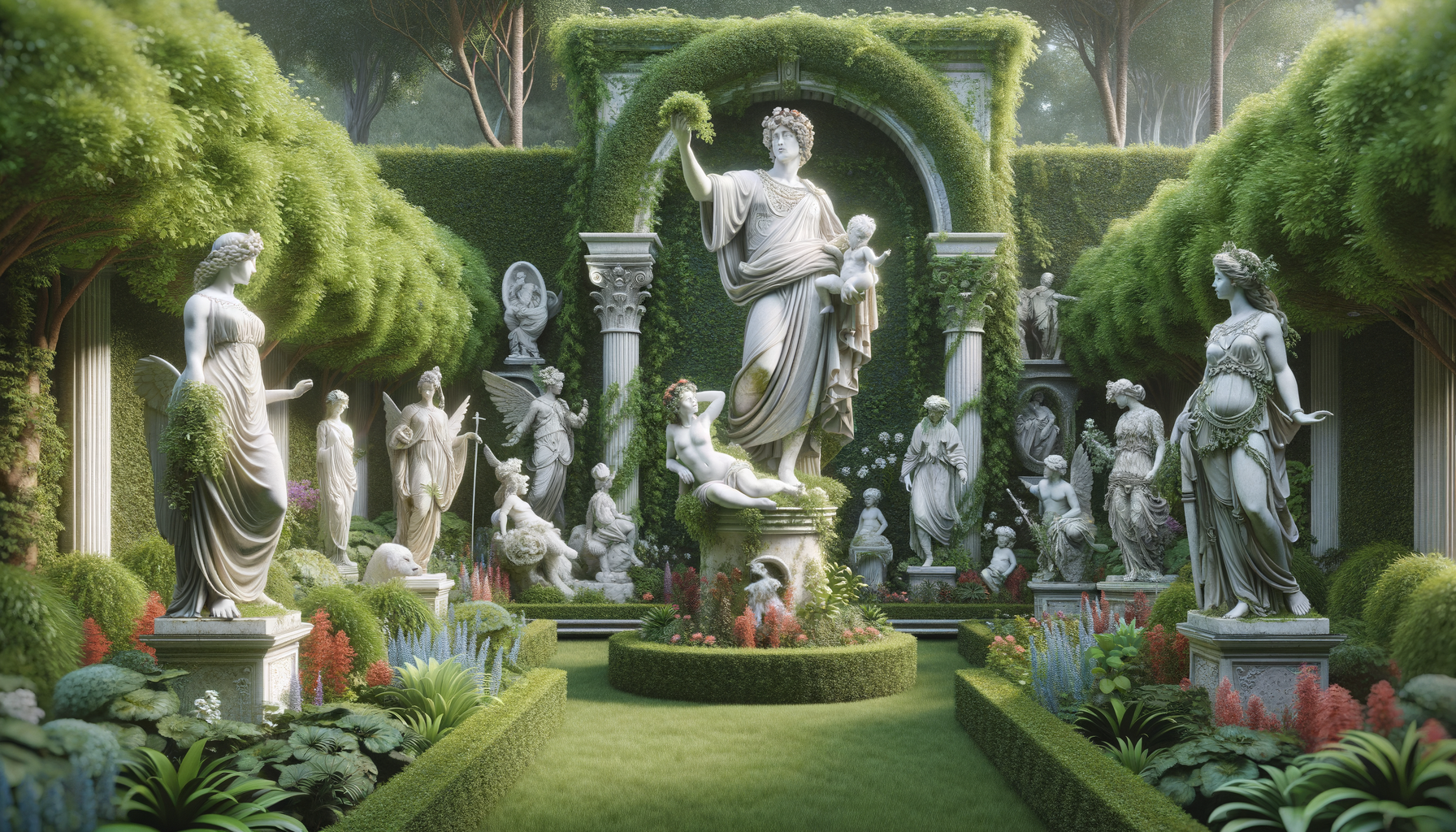Introduction to Garden Statues
Garden statues have long been a staple in outdoor decor, bringing a touch of elegance, whimsy, or historical significance to gardens around the world. These artistic sculptures not only enhance the aesthetic appeal of a garden but also reflect the personality and tastes of the gardener. From classical figures to modern art pieces, garden statues come in a myriad of styles and materials, each adding a unique charm to the landscape.
The significance of garden statues extends beyond mere decoration. They serve as focal points, guiding the eye and creating a sense of balance and harmony within the garden. Additionally, they can evoke emotions, tell stories, or even commemorate events and individuals. Whether nestled among flowers or standing proudly on a lawn, garden statues bridge the gap between nature and art, making outdoor spaces more inviting and inspiring.
The Evolution of Garden Statues
The history of garden statues dates back to ancient civilizations where they were used to honor deities, commemorate leaders, or symbolize cultural beliefs. In ancient Egypt, statues of gods and pharaohs adorned temple gardens, while the Greeks and Romans placed sculptures of mythological figures in their courtyards and public spaces. These early garden statues were often crafted from stone or bronze, materials that could withstand the elements and the passage of time.
During the Renaissance, garden statues experienced a revival as European aristocrats sought to emulate the classical gardens of antiquity. This period saw the introduction of intricate marble sculptures, fountains, and ornamental urns, reflecting the era’s emphasis on symmetry and beauty. In the modern era, garden statues have diversified in style and material, with options ranging from traditional stone carvings to contemporary metal and glass installations. This evolution reflects changing tastes and technological advancements, allowing for greater creativity and personalization in garden design.
Choosing the Right Garden Statue
Selecting the right garden statue involves considering several factors, including the garden’s overall theme, the statue’s size and material, and its intended placement. Here are some tips to guide your decision:
- Theme and Style: Consider the existing design of your garden. A classical statue might complement a formal garden, while a whimsical piece could add fun to a casual setting.
- Size and Scale: Ensure the statue is proportionate to your garden space. A large statue can overwhelm a small garden, while a tiny sculpture might get lost in a vast landscape.
- Material: Choose a material that suits your climate and maintenance preferences. Stone and metal are durable, while resin and fiberglass offer lightweight alternatives.
- Placement: Position the statue where it can be appreciated, such as near a path, in a flower bed, or as a centerpiece on a lawn.
The Impact of Garden Statues on Outdoor Spaces
Garden statues can significantly enhance the visual and emotional appeal of outdoor spaces. They act as focal points that draw attention and create visual interest, breaking the monotony of greenery and adding depth to the landscape. By strategically placing statues, gardeners can guide visitors through their space, creating a journey of discovery and delight.
Moreover, garden statues can evoke a wide range of emotions and meanings. A statue of a serene Buddha can instill a sense of peace and tranquility, while a playful animal sculpture can bring joy and whimsy. Statues can also serve commemorative purposes, honoring loved ones or marking significant events. In this way, garden statues transform outdoor spaces into personal sanctuaries that reflect the gardener’s values and memories.
Maintaining and Preserving Garden Statues
To ensure garden statues remain beautiful and intact over time, regular maintenance is essential. Different materials require specific care techniques:
- Stone Statues: Clean with a soft brush and mild soap to remove dirt and algae. Avoid harsh chemicals that can erode the surface.
- Metal Statues: Apply a protective wax coating to prevent rust. Regularly check for signs of corrosion and address them promptly.
- Resin and Fiberglass Statues: These materials are relatively low-maintenance but should be sheltered from extreme weather to prevent fading and cracking.
Additionally, consider the placement of statues to protect them from environmental damage. For example, placing a statue under a tree can shield it from direct sunlight, while a pedestal can elevate it from damp ground. By taking these steps, you can preserve the beauty and integrity of your garden statues for years to come.




Leave a Reply